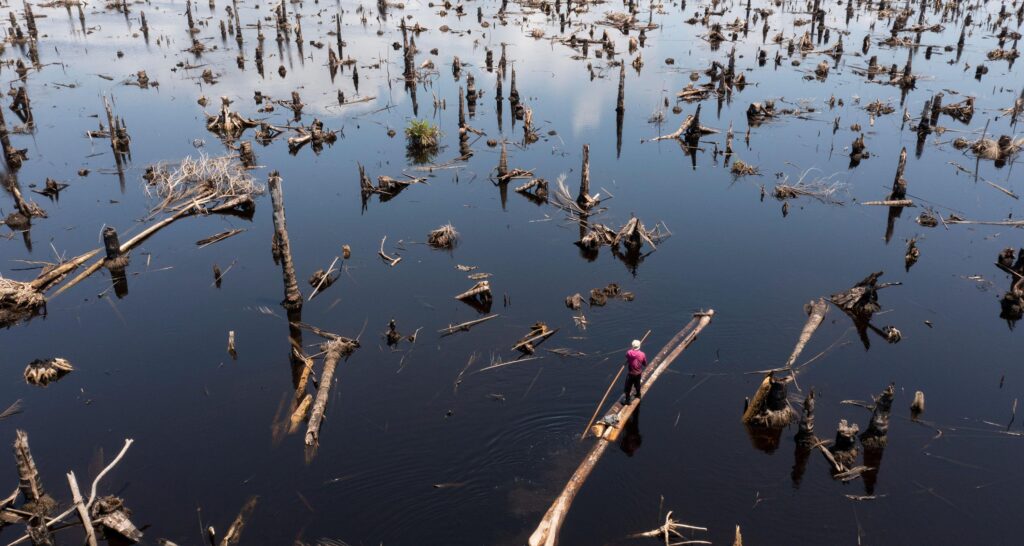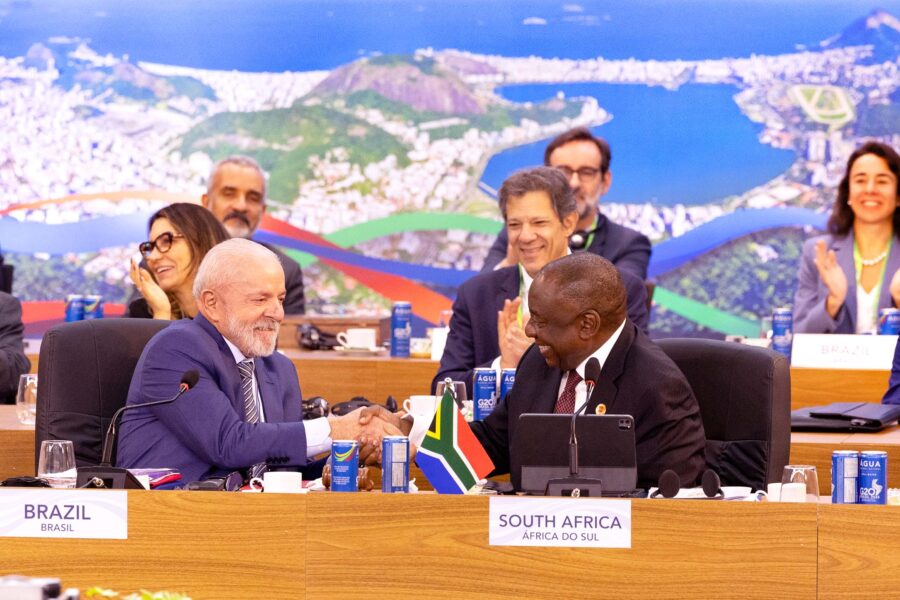We need an ambitious global plan to reverse nature loss
In 2022 we should aspire to a Paris-style agreement on restoring biodiversity. Ambition alone, articulated in several published pledges, is not enough: governments must now commit to a strengthened Global Biodiversity Framework that compels them to take meaningful action
Biodiversity — Global

Climate change may be perceived as the most pressing environmental challenge we face; sadly, it is far from the only one. Our unsustainable patterns of production and consumption are placing increasingly unbearable pressure on many of the world’s natural planetary systems. And, while the imperative to act on climate change is now, at last, firmly embedded in public consciousness, the same cannot yet be said for these other looming sustainability challenges.
Pressures like deforestation, overfishing, water scarcity, unsustainable infrastructure, mining, pesticides, fertilizer overuse – the list goes on – are all working in the same direction. They are undermining and degrading nature. We urgently need concerted action by governments to protect nature and all life on earth, including our own, and to address the root causes of its degradation: our unsustainable economic practices.
The good news is that a process is underway to take that action, through the Convention on Biological Diversity (CBD), an international agreement struck in 1992 at the Rio Earth Summit that also created the UN Framework Convention on Climate Change. In March 2022, negotiations are set to continue on a Global Biodiversity Framework, due to be agreed at COP15 in Kunming, China later this year, at a summit that has been delayed due to the COVID-19 pandemic.
The bad news is that these negotiations are not delivering the expected results – yet. Despite commitments to protect nature that many world leaders have made in other fora, governments are collectively failing to apply them to the Global Biodiversity Framework. In so doing, they risk missing a once-in-a-decade opportunity to secure an ambitious and transformative agreement capable of reversing biodiversity loss.
But first, a step back. What is at stake? Nature is essential to human health, well-being, and prosperity. The services that ecosystems provide – regulating our climate, our water, removing toxins from air, water, and soil, providing food and fibre – literally make human life possible.
These systems also underpin our economy. Each year, nature provides an estimated USD 125 trillion worth of value to the global economy through services such as drinkable water, food, water for industrial processes, fresh air, heat absorption, productive soil, and forests and oceans that soak up our carbon emissions. The World Economic Forum estimates that around half of global GDP is generated by economic sectors that are dependent on nature.
But that nature is under intense pressure. Around one million species are threatened with extinction, according to the 2019 global assessment report from the Intergovernmental Science-Policy Platform on Biodiversity and Ecosystem Services (IPBES). WWF’s own research has found that, since 1970, global wildlife populations have declined by a staggering 68%. Critical ecosystems, such as the Amazon, are close to tipping points past which recovery may be impossible. Nature is in crisis, and the consequences will be disastrous.
Governments have not been blind to this crisis. In a series of multilateral pledges, resolutions, alliances, coalitions, and compacts, world leaders have made commitments that, if they were to be met, would do much to address the world’s nature crisis.
To give just a few examples:
- At the congress of the International Union for Conservation of Nature in 2020, governments passed Resolution 116 which, among other things, committed them to halting and reversing biodiversity loss by 2030, creating a “nature-positive world,” with more nature by 2030 than we have at present.
- The 2030 Nature Compact, agreed by G7 leaders in July 2021, committed to end human-induced extinctions.
- The political heads of 93 countries have agreed, through the Leaders’ Pledge for Nature, to “transition to sustainable patterns of production and consumption and sustainable food systems that meet people’s needs while remaining within planetary boundaries.”
- For the PreCOP of the CBD in August 2021, 115 member states and the European Union released a joint statement committing to eliminating harmful incentives while creating positive ones, and aligning financial flows to a nature-positive economy.
- Seventy-three countries have signed up to the High Ambition Coalition for Nature and People, which includes a target of protecting 30% of the world’s land and oceans by 2030.
But, as we show in our new report, Bridging the Gap: Translating Political Commitments into an Ambitious Global Biodiversity Framework, these pledges collectively go much further than the current draft of the Global Biodiversity Framework. This disconnect puts the world in danger of repeating the failings of the last set of goals to protect nature agreed under the CBD, the 2010 Aichi Targets, all of which were missed.
It is not too late to change course. On 13 March, government negotiators will meet in Geneva to continue talks on the Global Biodiversity Framework, ahead of COP15, which is expected to take place in June or July in Kunming. Our report sets out key areas in which the Framework must be strengthened.
Overall, this is the chance to agree on a global goal for nature, similar to what we have agreed for climate change. Pursuing carbon neutrality and zero-net emissions offers a clear path for governments, companies, investors, and consumers to contribute to avoiding that emergency. We need a similar common global direction for nature: a nature-positive global goal committed to ensuring we have more nature by the end of the decade than today, through conservation, restoration, and sustainable use.
The Framework should include clear objectives and milestones to:
- halt and reverse biodiversity loss by 2030
- extend protection to at least 30% of land and waters
- immediately end human-induced extinctions and increase species abundance by 2030
- halve the environmental footprint of production and consumption by the same date
Nature-based solutions, which work with natural systems to protect biodiversity and capture carbon emissions, should be included in the Framework. Assuming these solutions adhere to rigorous environmental and social safeguards, they offer an important tool to address societal challenges, including climate resilience and food and water security, as well as protecting nature.
The Framework should also commit to reforming our financial systems, ending subsidies and ensuring that public and private financial flows are aligned with a nature-positive global economy. It should also include explicit recognition of a rights-based approach, upholding gender equality and the rights of indigenous peoples and local communities. It should recognize the importance of ensuring free, prior, and informed consent from these communities for conservation decisions that affect them – embracing an inclusive model of conservation.
The Framework will also need a strong planning, monitoring, reporting, and review mechanism. The lack of a robust implementation mechanism was a major factor in the failure of the world to meet the Aichi Targets.
Finally, closer alignment needs to be forged between the Global Biodiversity Framework, other multilateral environmental agreements, and the 2030 Agenda for Sustainable Development. Nature loss and climate change are interrelated and interdependent crises. We either solve both problems or we solve neither and fail to achieve the Sustainable Development Goals. Synergies and co-benefits can be realized by tackling social and environmental challenges holistically.
Fundamentally, the same forces pushing our climate system towards crisis are flexing other planetary boundaries and endangering nature and ecosystems.





